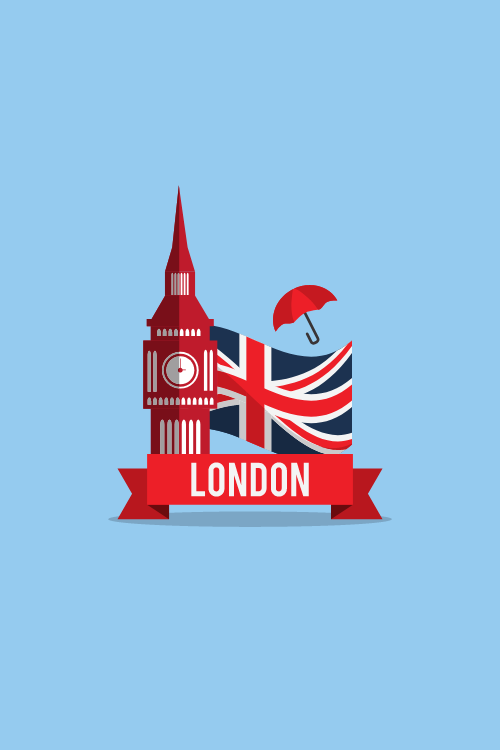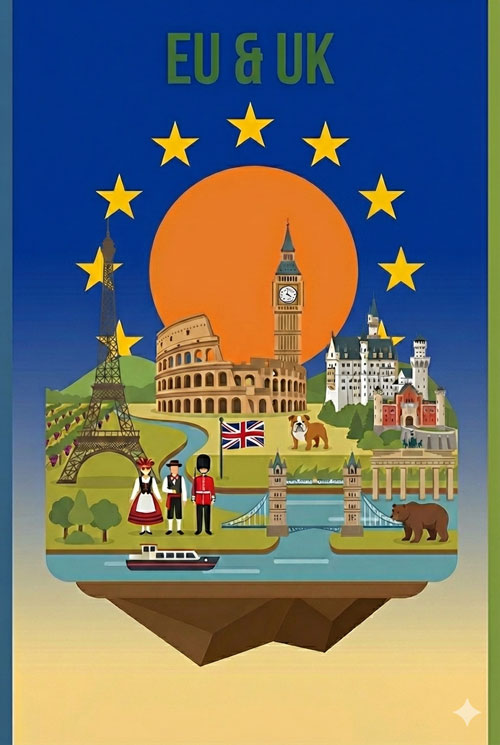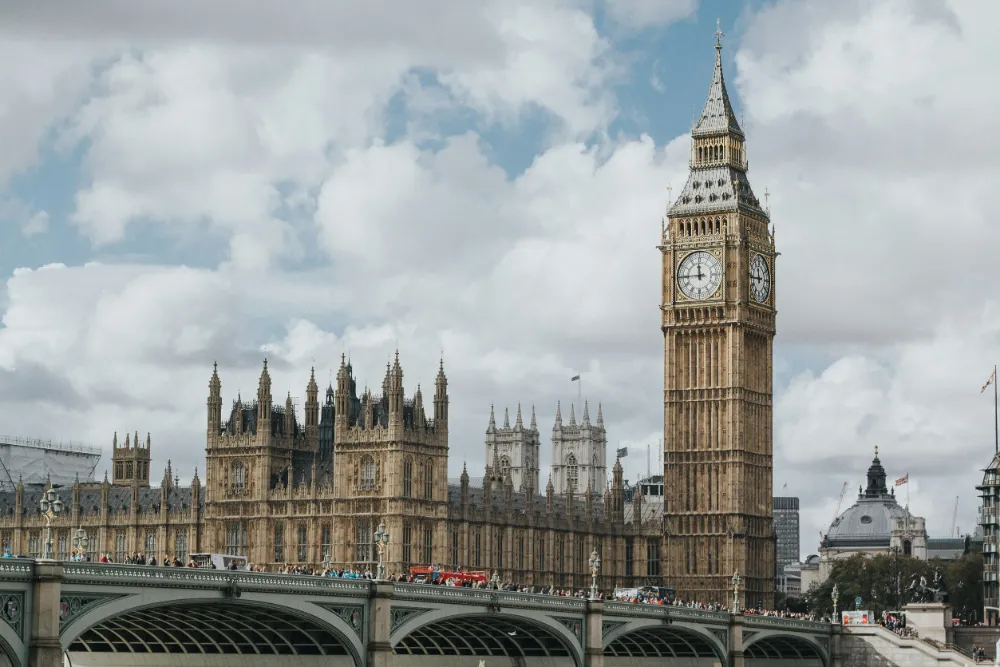eSIM UK
The Best Time to Visit England: Everything You Should Know
England packs a world of adventure onto one island.
But planning the perfect trip comes with a classic question: when is the best time to go?
This guide is your personal planner to find that perfect balance, helping you decide when to pack your bags for your ideal English adventure.
The Best Time to Visit England
Your Complete Visual Guide for 2025/2026
England At-a-Glance: Your Perfect Trip
Best Weather
June – August
For long, sunny days and outdoor adventures.
Best for Budget
Nov, Jan, Feb
Lowest prices on flights and accommodation.
Fewest Crowds
October – March
Enjoy attractions with a more local feel.
Best for Hiking
May, June, Sep
Pleasant weather and quieter trails.
Decoding English Weather
English weather is famously unpredictable, but trends emerge. This chart shows the monthly climate averages for London, giving you a baseline for what to expect. The south is typically warmer and drier than the north.
A Tale of Four Seasons
Spring (Mar – May)
A time of renewal as the country bursts into color. Weather is unpredictable but crowds are smaller than summer. Ideal for seeing gardens bloom and exploring cities before the rush.
Summer (Jun – Aug)
Energetic and vibrant, with the best weather and a packed festival calendar. This is peak season, so expect the highest prices and largest crowds, especially during school holidays (late July-Aug).
Autumn (Sep – Nov)
A cozy, atmospheric season with golden foliage. September is a sweet spot with good weather and fewer crowds. Weather gets cooler and wetter from October onwards.
Winter (Dec – Feb)
December is festive with Christmas markets. Jan & Feb are the cheapest and quietest months, perfect for museums in the city. Days are short and the weather is cold and often damp.
What’s Your Travel Style?
The “best” time to visit depends entirely on your priorities. Follow this simple guide to find the perfect season for your trip.
START HERE
What matters most?
Weather & Sun
SUMMER
(June – August)
Low Prices
WINTER
(Jan – Feb)
Balance of Both
SPRING / AUTUMN
(May, June, Sep)
England At-a-Glance: The Best Times to Visit
If you need a quick answer, this cheat sheet breaks down the best times to visit based on what matters most to you.
| For the Best… | The Best Time Is… | Why? |
| Weather & Sunshine | Late June – August | Longest, warmest, and sunniest days, ideal for outdoor activities. |
| Budget & Deals | November, January, February | Off-peak season means the lowest prices on flights and hotels (excluding Christmas). |
| Avoiding Crowds | October – March | Outside of holidays, tourist numbers are at their lowest, offering a more local feel. |
| Hiking & Outdoors | May, June & September | The “sweet spot” of pleasant weather, stable conditions, and fewer people on the trails. |
| Sightseeing & Families | May, June & September | Balances great weather with manageable crowds, making it ideal for exploring cities and attractions. |
Decoding English Weather: A Month-by-Month Climate Guide
If there’s one thing to know about English weather, it’s that it loves to keep you guessing. The local saying, “There is no bad weather, only inappropriate clothing,” is advice to live by. Rain is a possibility any time of year, and it’s not uncommon to experience sunshine, clouds, and a brief shower all in the same afternoon.
The key isn’t to chase a perfect forecast but to pack smart and be ready for anything. That said, there are clear patterns. The south is generally warmer and drier than the north, and the west is typically wetter than the east. To give you a baseline, here are the monthly averages for London.
| Month | Avg. High | Avg. Low | Avg. Rainfall | Avg. Rainy Days |
| January | 47°F / 8°C | 39°F / 4°C | 2.2 in / 55 mm | 9 |
| February | 48°F / 9°C | 39°F / 4°C | 1.9 in / 48 mm | 8 |
| March | 53°F / 12°C | 38°F / 3°C | 1.2 in / 31 mm | 7 |
| April | 58°F / 14°C | 40°F / 4°C | 1.4 in / 36 mm | 7 |
| May | 64°F / 18°C | 46°F / 8°C | 1.6 in / 41 mm | 8 |
| June | 70°F / 21°C | 53°F / 12°C | 1.8 in / 46 mm | 8 |
| July | 74°F / 23°C | 59°F / 15°C | 1.6 in / 41 mm | 7 |
| August | 73°F / 23°C | 59°F / 15°C | 2.3 in / 58 mm | 8 |
| September | 67°F / 19°C | 50°F / 10°C | 1.8 in / 46 mm | 8 |
| October | 60°F / 16°C | 46°F / 8°C | 2.9 in / 75 mm | 9 |
| November | 53°F / 12°C | 39°F / 4°C | 2.5 in / 64 mm | 9 |
| December | 49°F / 9°C | 38°F / 3°C | 2.7 in / 69 mm | 9 |
A Deep Dive into England’s Seasons
Each English season has a distinct personality. Understanding the trade-offs between them is the key to planning your perfect trip. While summer offers the most sunshine, many experienced travelers find the shoulder seasons of spring and autumn provide a better overall experience by balancing good weather with fewer crowds and lower prices.
Spring in England (March – May): The Great Awakening
The Vibe: A time of renewal and blossoming beauty. The country sheds its winter grey for vibrant greens, and the air fills with a sense of optimism as flowers burst into color.
Weather: Spring weather is famously unpredictable. Early March can still feel like the depths of winter, while late May can offer glorious summer-like days. The term “April showers” exists for a reason, so packing layers and a waterproof jacket is non-negotiable. Temperatures steadily climb from cool to pleasant, generally ranging from 48°F to 64°F (9°C to 18°C).
Pros: You’ll find fewer crowds and more reasonable prices than in the summer. The landscape is arguably at its most beautiful, with blooming daffodils, carpets of bluebells in ancient woodlands, wisteria-draped cottages, and newborn lambs frolicking in the fields.
Cons: The weather is a gamble; you could be blessed with a week of sun or face a week of persistent rain. Be mindful of public holidays—the long Easter weekend and the two May Bank Holidays cause sharp, temporary spikes in domestic travel, leading to more crowds and higher prices for accommodation and transport.
What to Do & Where to Go:
- Gardens & Flowers: This is the season for garden lovers. Visit the world-renowned RHS Chelsea Flower Show in London (late May), see the cherry blossoms at Kew Gardens, or hunt for the iconic bluebells that blanket woodlands across the country in late April and May.
- The Cotswolds: The honey-colored stone villages like Bourton-on-the-Water and Bibury are postcard-perfect when framed by spring wisteria and daffodils.
- City Breaks: It’s an ideal time to explore the historic streets of London, Bath, or York, taking in the major sights before the summer rush begins.
Summer in England (June – August): The Season of Sunshine and Festivals
The Vibe: Energetic, vibrant, and lived outdoors. England is alive with festivals, beer gardens are buzzing, and long, light-filled evenings encourage everyone to make the most of the sun.
Weather: This is the warmest and sunniest time of year, with daylight stretching well past 9 PM in June and July. Temperatures are comfortable, typically ranging from 70°F to 80°F (21°C to 27°C). While glorious, sunny days are common, they are never guaranteed. Heatwaves are possible, as are occasional thunderstorms.
Pros: Summer boasts the best weather for outdoor activities like hiking and beach trips. The cultural calendar is packed with world-famous events, including the Wimbledon Tennis Championships, the Glastonbury music festival, and London’s Notting Hill Carnival.
Cons: This is peak tourist season. Expect the largest crowds, the highest prices for flights and accommodation, and the need to book everything far in advance. The situation intensifies from mid-July through August, which coincides with the long UK school summer holidays, making it the busiest and most expensive period of the entire year.
What to Do & Where to Go:
- Beaches: For a classic seaside holiday, head to the stunning coastlines of Cornwall and Devon, where you’ll find golden sands and charming fishing villages. Be prepared for crowds, especially in popular spots like St. Ives and Newquay.
- National Parks: The long, sunny days are perfect for hiking and exploring England’s great outdoors. The Lake District, Peak District, and New Forest are all spectacular in summer.
- Festivals: If you thrive on a lively atmosphere, plan your trip around a major music, arts, or sporting event. Just be sure to book tickets and accommodation months ahead.
Autumn in England (September – November): Golden Hues and Cozy Pubs
The Vibe: A mellow, atmospheric, and wonderfully cozy season. The frantic energy of summer gives way to crisp air, a stunning palette of fall foliage, and the comforting glow of a pub fireplace.
Weather: September often feels like a pleasant extension of summer, a period locals sometimes call an “Indian Summer,” with warm, dry days perfect for exploring. From October onwards, it becomes progressively cooler, wetter, and darker. Temperatures generally range from 48°F to 68°F (9°C to 20°C).
Pros: This is a fantastic shoulder season. Once schools return in early September, crowds disperse and prices for flights and accommodation drop significantly. The autumn foliage is breathtaking, transforming the countryside into a canvas of red, orange, and gold.
Cons: The weather becomes increasingly unreliable as the season progresses. By November, the days are short, with the sun setting around 4 PM, and the weather can be damp and dreary. Some attractions in rural areas may reduce their hours or close entirely for the winter.
What to Do & Where to Go:
- Countryside Walks: The Peak District, Northumberland, and the Lake District are particularly stunning with their autumn colors.
- Cultural Cities: Explore the Georgian streets of Bath during the Jane Austen Festival (September) or visit York for its popular Food and Drink Festival.
- Unique Traditions: Experience the very English tradition of Guy Fawkes Night (or Bonfire Night) on November 5th, when the skies light up with fireworks and bonfires.
Winter in England (December – February): Festive Cheer and Quiet Contemplation
The Vibe: Winter is a tale of two distinct experiences. December is magical, festive, and bright with Christmas cheer. January and February are quiet, stark, and offer a chance for peaceful, introspective travel.
Weather: This is the coldest, darkest, and often dampest time of year. Temperatures typically hover around 45°F (7°C). Snow is possible but generally rare and fleeting, except in the north of England and on high ground like the Pennines or the Lake District fells.
Pros: This is the cheapest and least crowded time to visit, especially in January and February. Cities like London, York, and Bath are transformed into festive wonderlands with Christmas markets and dazzling light displays in December. It’s the perfect opportunity to explore world-class museums, galleries, and theaters without the long queues.
Cons: The short daylight hours (the sun can set before 4 PM) severely limit sightseeing time. The weather can be genuinely dreary and wet. Many attractions, B&Bs, and cafes in the countryside will be closed for the season.
What to Do & Where to Go:
- City Breaks: Focus your trip on major cities where the main attractions are indoors and open year-round. London, York, Bath, and Manchester are excellent winter choices.
- Christmas Markets: If visiting in late November or December, embrace the festive spirit at the charming Christmas markets found in cities across the country.
- The Great English Pub: There’s no better time to embrace the culture of the English pub. Find a cozy spot by a roaring fire to enjoy a pint of real ale and a hearty Sunday roast.
The Best Time to Visit England for Your Travel Style
Now let’s synthesize all that information into actionable advice tailored to your specific travel needs.
For the Budget-Conscious Traveler
Best Time: November, January, and February are your go-to months for the best deals. The key is to travel outside of the two-week period covering Christmas and New Year’s, when prices temporarily spike.
Strategy: During these off-peak months, flights and accommodation are at their absolute cheapest. Focus your itinerary on cities like London or Manchester, where the best attractions (museums, galleries, theaters) are indoors and open all year. To save even more, book inter-city train tickets far in advance, as last-minute fares can be very expensive. Consider staying in budget-friendly hostels or in towns just outside major city centers, which often have lower accommodation costs and cheaper restaurants.
For Families with Children
The Dilemma: The long summer school holiday (late July to August) offers the most reliable weather for family activities but comes with the biggest crowds and highest prices, which can be stressful and expensive.
The “Sweet Spot” Solution: The best times for a family trip are often the late May half-term break or the first two weeks of July. This allows you to take advantage of good weather before the absolute peak of crowds and prices hits later in the summer. September is also an excellent choice, as you’ll enjoy pleasant weather right after UK schools have gone back.
Key Planning Tool: The single most effective way to manage your budget and avoid overwhelming crowds is to plan your trip around the UK school and bank holidays. Travel during term time is always cheaper and quieter.
| Holiday | Dates (England & Wales, 2025) | Impact on Travel |
| New Year’s Day | Wed, Jan 1 | Public holiday; some closures. |
| February Half-Term | Mon, Feb 17 – Fri, Feb 21 | Moderate increase in family travel. |
| Good Friday | Fri, Apr 18 | Start of a 4-day weekend. High travel volume. |
| Easter Monday | Mon, Apr 21 | End of a 4-day weekend. High travel volume. |
| Easter Holidays | Mon, Apr 7 – Mon, Apr 21 | Two-week school holiday. Very busy. |
| Early May Bank Holiday | Mon, May 5 | 3-day weekend. High travel volume. |
| Spring Bank Holiday | Mon, May 26 | 3-day weekend. Start of half-term. |
| May Half-Term | Mon, May 26 – Fri, May 30 | One-week school holiday. Very busy. |
| Summer Bank Holiday | Mon, Aug 25 | 3-day weekend. Peak travel volume. |
| Summer Holidays | Approx. Tue, Jul 22 – Mon, Sep 1 | PEAK SEASON. Highest prices and crowds. |
| October Half-Term | Mon, Oct 27 – Fri, Oct 31 | One-week school holiday. Busy. |
| Christmas Day | Thu, Dec 25 | Public holiday. Widespread closures. |
| Boxing Day | Fri, Dec 26 | Public holiday. Start of sales. |
| Christmas Holidays | Approx. Mon, Dec 22 – Fri, Jan 2 | Two-week school holiday. Very busy. |
Note: Holiday dates can vary slightly by local council, so always check if planning around a specific school.
For Hikers & Outdoor Lovers
Best Time: May, June, and September are the undisputed champions for walking and hiking in England.
Why: These months provide the perfect combination of long daylight hours, mild temperatures, more stable weather conditions, and significantly fewer people on popular trails compared to the peak months of July and August. Spring walks in the Lake District or Cotswolds are rewarded with blooming wildflowers and baby lambs. Autumn hikes offer the bonus of stunning fall foliage and the promise of a cozy pub at the end of the trail.
For Sightseers & Culture Vultures
City Travel: England’s cities are fantastic year-round destinations. If your main goal is sightseeing with minimal queues at iconic attractions like the Tower of London, the Roman Baths, or the British Museum, the best time to visit is during the deep off-season in January and February.
Festivals & Events: If you want to experience England at its most vibrant and celebratory, you’ll need to brave the summer crowds for world-class events like Glastonbury or the Notting Hill Carnival. The shoulder seasons, however, offer a great mix of cultural festivals without the peak summer intensity. Consider the Hay Festival for literature in May or the Jane Austen Festival in Bath in September for a more relaxed but equally enriching experience.
Stay Connected in England with an eSIM
You’ve just landed at Heathrow, excited to start your adventure. But first, you need to get online to pull up your hotel reservation, navigate to the Tube, or let family know you’ve arrived safely. In today’s world, instant connectivity is essential.
This is where many travelers hit their first snag. You could face exorbitant data roaming fees from your home provider, or waste precious vacation time hunting for a kiosk to buy a local physical SIM card. For visitors from Europe, this has become a particular pain point. Since Brexit, the “roam like at home” rules that once guaranteed free roaming no longer apply in the UK. Many EU mobile operators have reintroduced daily charges and confusing data caps, creating the risk of unexpected bill shock.
There’s a much smarter way to travel. With an eSIM from eSIM4.com, you can download a data plan for England before you even leave home and activate it the moment you land. It’s the perfect modern solution: convenient, affordable, and incredibly easy. Say goodbye to roaming anxiety and airport SIM queues. Get your England data plan today and travel smarter.
Check out eSIM4.com for affordable, reliable data plans for your trip to England.













